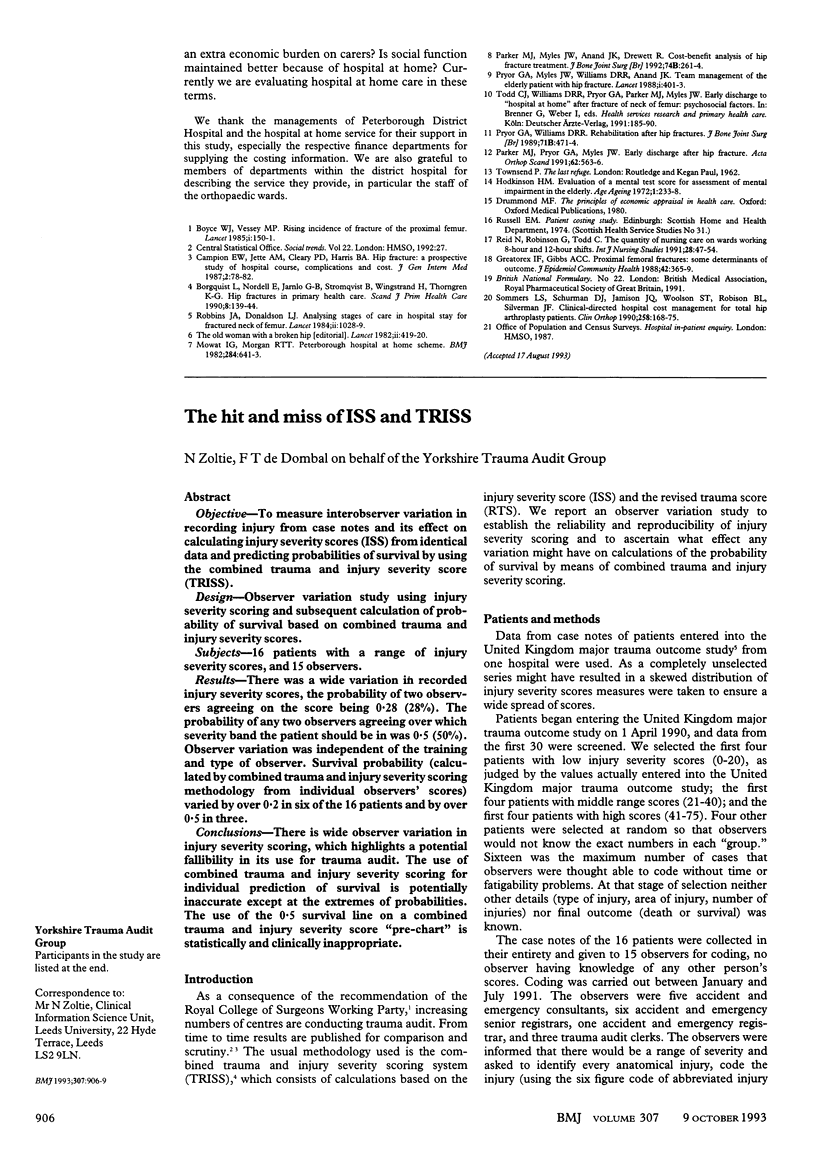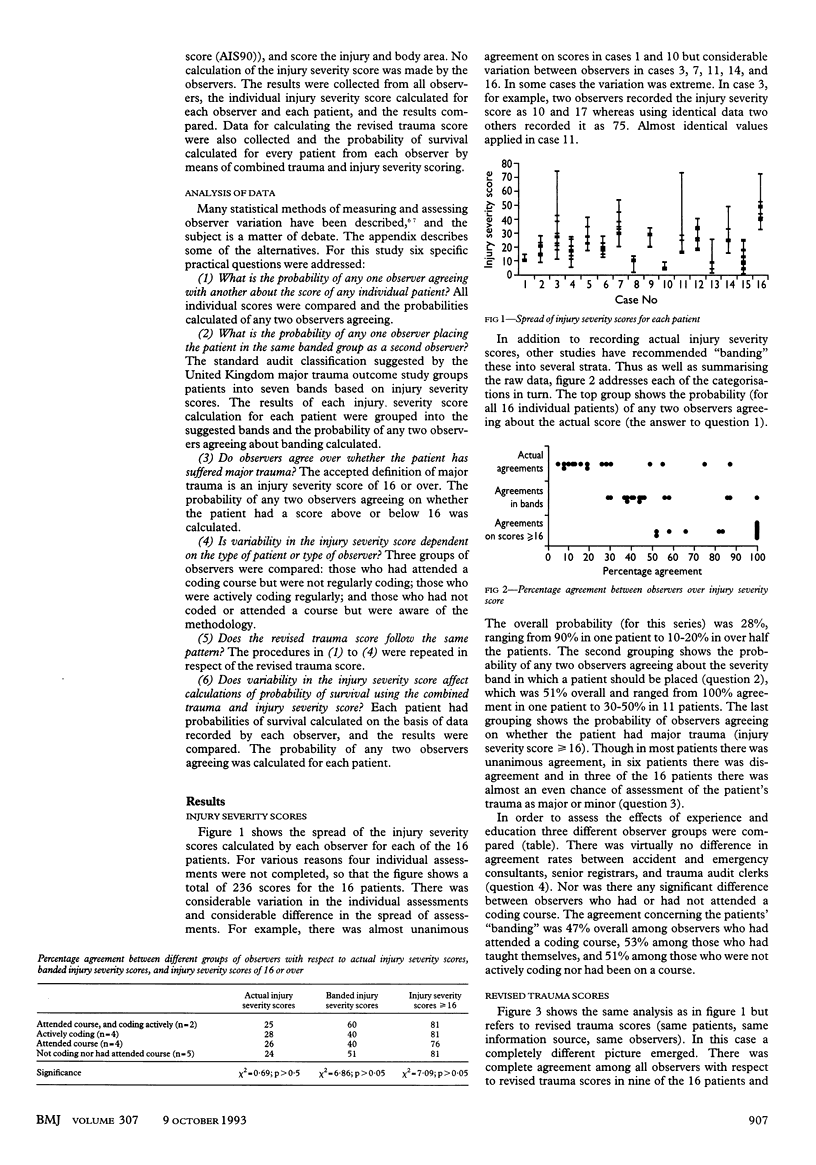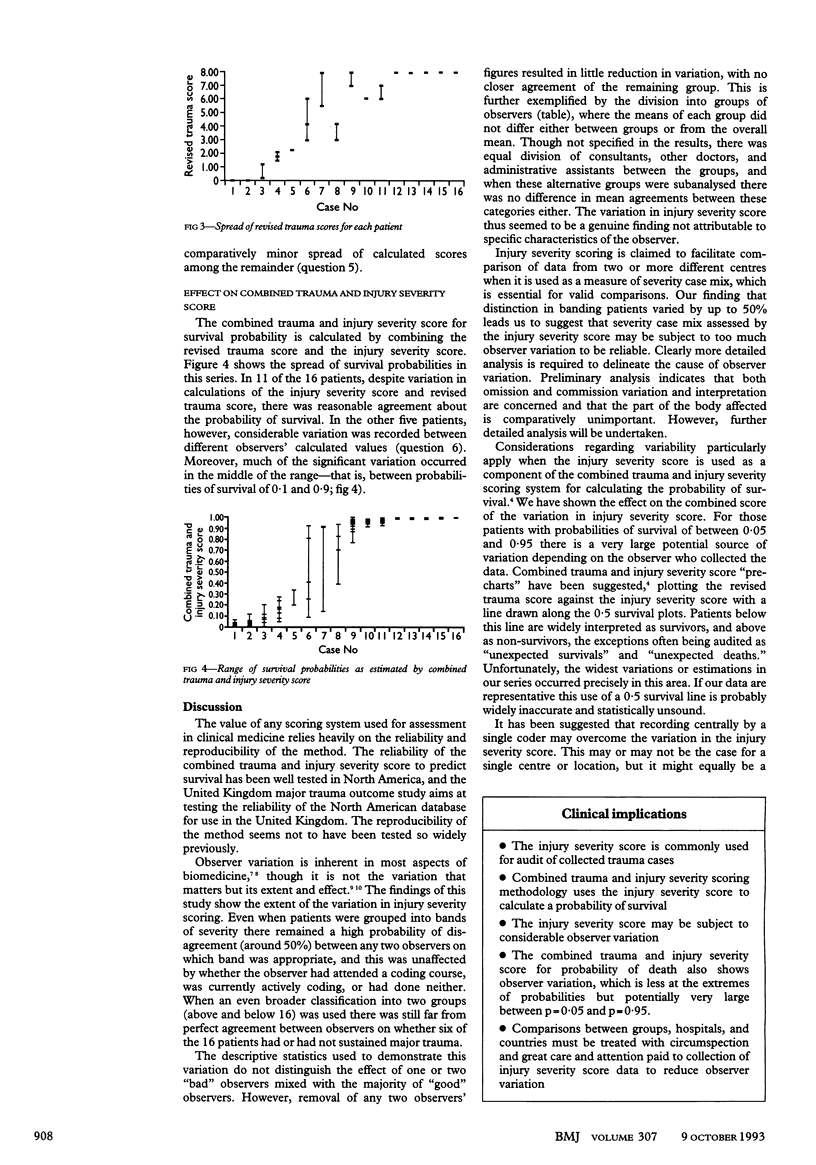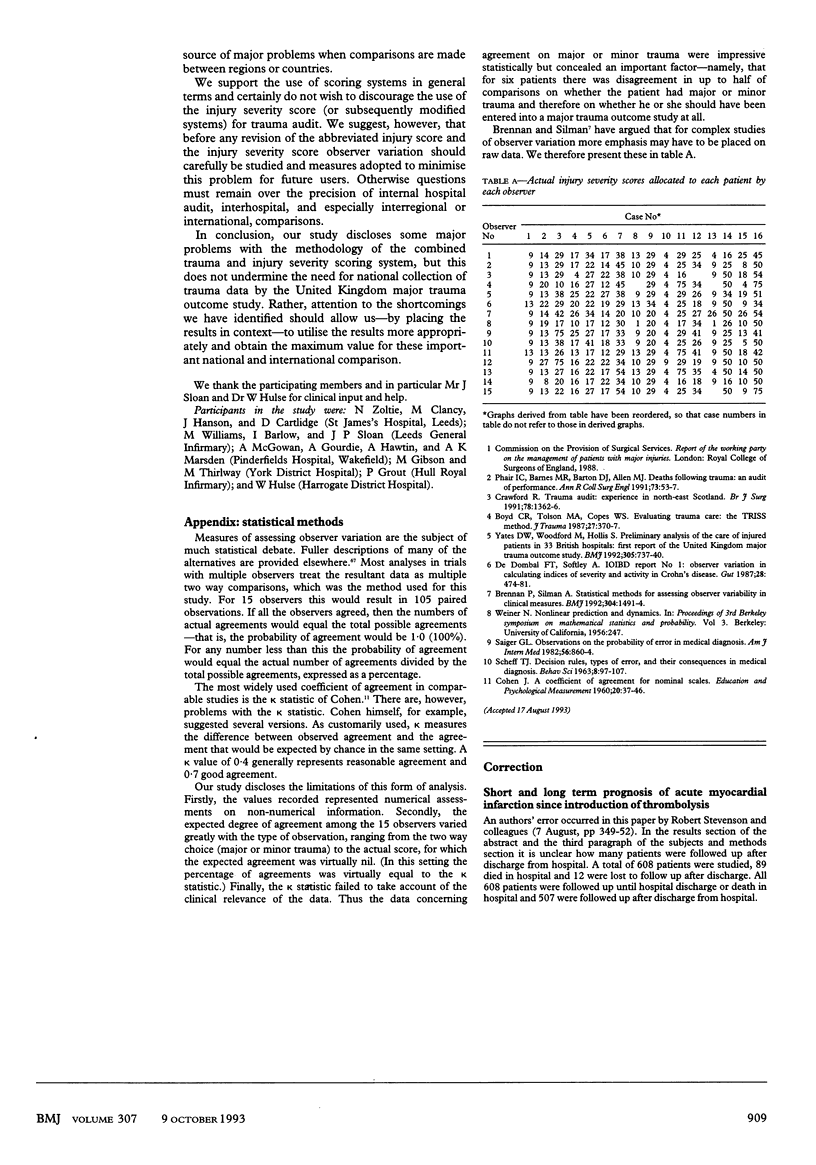Abstract
OBJECTIVE--To measure interobserver variation in recording injury from case notes and its effect on calculating injury severity scores (ISS) from identical data and predicting probabilities of survival by using the combined trauma and injury severity score (TRISS). DESIGN--Observer variation study using injury severity scoring and subsequent calculation of probability of survival based on combined trauma and injury severity scores. SUBJECTS--16 patients with a range of injury severity scores, and 15 observers. RESULTS--There was a wide variation in recorded injury severity scores, the probability of two observers agreeing on the score being 0.28 (28%). The probability of any two observers agreeing over which severity band the patient should be in was 0.5 (50%). Observer variation was independent of the training and type of observer. Survival probability (calculated by combined trauma and injury severity scoring methodology from individual observers' scores) varied by over 0.2 in six of the 16 patients and by over 0.5 in three. CONCLUSIONS--There is wide observer variation in injury severity scoring, which highlights a potential fallibility in its use for trauma audit. The use of combined trauma and injury severity scoring for individual prediction of survival is potentially inaccurate except at the extremes of probabilities. The use of the 0.5 survival line on a combined trauma and injury severity score "pre-chart" is statistically and clinically inappropriate.
Full text
PDF



Selected References
These references are in PubMed. This may not be the complete list of references from this article.
- Boyd C. R., Tolson M. A., Copes W. S. Evaluating trauma care: the TRISS method. Trauma Score and the Injury Severity Score. J Trauma. 1987 Apr;27(4):370–378. [PubMed] [Google Scholar]
- Brennan P., Silman A. Statistical methods for assessing observer variability in clinical measures. BMJ. 1992 Jun 6;304(6840):1491–1494. doi: 10.1136/bmj.304.6840.1491. [DOI] [PMC free article] [PubMed] [Google Scholar]
- Crawford R. Trauma audit: experience in north-east Scotland. Br J Surg. 1991 Nov;78(11):1362–1366. doi: 10.1002/bjs.1800781130. [DOI] [PubMed] [Google Scholar]
- Phair I. C., Barton D. J., Barnes M. R., Allen M. J. Deaths following trauma: an audit of performance. Ann R Coll Surg Engl. 1991 Jan;73(1):53–57. [PMC free article] [PubMed] [Google Scholar]
- SAIGER G. L. Observations on the probability of error in medical diagnosis. Ann Intern Med. 1962 Jun;56:860–864. doi: 10.7326/0003-4819-56-6-860. [DOI] [PubMed] [Google Scholar]
- Yates D. W., Woodford M., Hollis S. Preliminary analysis of the care of injured patients in 33 British hospitals: first report of the United Kingdom major trauma outcome study. BMJ. 1992 Sep 26;305(6856):737–740. doi: 10.1136/bmj.305.6856.737. [DOI] [PMC free article] [PubMed] [Google Scholar]
- de Dombal F. T., Softley A. IOIBD report no 1: Observer variation in calculating indices of severity and activity in Crohn's disease. International Organisation for the Study of Inflammatory Bowel Disease. Gut. 1987 Apr;28(4):474–481. doi: 10.1136/gut.28.4.474. [DOI] [PMC free article] [PubMed] [Google Scholar]


